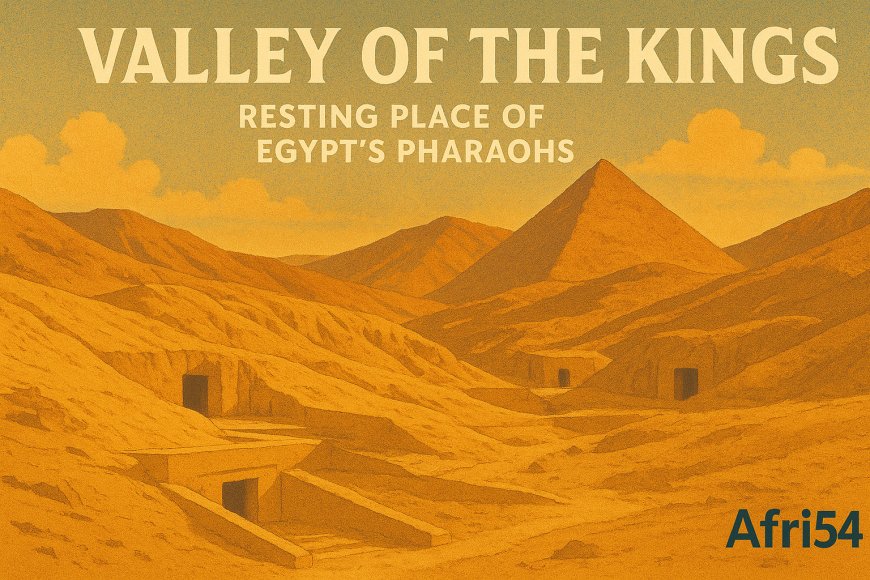Valley of the Kings: Resting Place of Egypt’s Pharaohs
Explore the Valley of the Kings in Luxor, Egypt — the burial site of Tutankhamun and other New Kingdom pharaohs. Discover its history, tombs, and enduring legacy.

Reading Time: ~6 minutes
On the west bank of the Nile near Luxor lies the Valley of the Kings, one of the most famous archaeological sites in the world. For over 500 years, during Egypt’s New Kingdom (c. 1550–1070 BCE), this desert valley served as the final resting place for pharaohs, nobles, and high priests. Among its treasures is the tomb of Tutankhamun, whose discovery captivated the world.
Why the Valley Was Chosen
Unlike the pyramids of earlier dynasties, New Kingdom rulers sought more hidden and secure tombs to protect their riches from tomb robbers. The rugged cliffs of the Valley of the Kings offered both seclusion and symbolism, believed to be linked to the god Osiris, ruler of the underworld.
The Tombs of the Pharaohs
The valley contains more than 60 tombs, ranging from small chambers to sprawling complexes carved deep into the limestone. Notable burials include:
-
Tutankhamun (KV62) – Discovered intact in 1922 by Howard Carter, filled with golden treasures.
-
Ramses II (KV7) – The “Great Pharaoh” of Egypt’s New Kingdom, known for monumental building projects.
-
Seti I (KV17) – One of the longest and most elaborately decorated tombs in the valley.
The tombs are adorned with vibrant wall paintings and inscriptions, depicting the Book of the Dead, celestial maps, and scenes guiding the deceased through the afterlife.
The Discovery of Tutankhamun’s Tomb
In 1922, archaeologist Howard Carter uncovered the nearly intact tomb of the boy-king Tutankhamun. Inside were more than 5,000 artifacts, including the iconic golden funerary mask that has become a symbol of Ancient Egypt. This discovery sparked global fascination and revolutionized the field of Egyptology.
Symbolism and Belief in the Afterlife
The Valley of the Kings reflects the Egyptians’ profound belief in the afterlife. Tombs were designed not only as burial chambers but as journeys into eternity, ensuring the pharaoh’s resurrection and eternal reign among the gods.
The Valley Today
Today, the Valley of the Kings is a UNESCO World Heritage Site and one of Egypt’s most visited attractions. Many tombs are open to the public, allowing visitors to step into the painted corridors once reserved for pharaohs. Conservation efforts continue as archaeologists work to preserve the delicate wall paintings and uncover new secrets.
Why the Valley of the Kings Matters
The Valley of the Kings is more than an archaeological site — it is a window into the spiritual, political, and artistic heart of Ancient Egypt. Each tomb tells a story of power, faith, and the quest for immortality.
Final Thoughts
To walk through the Valley of the Kings is to walk alongside history itself. Every hieroglyph, every chamber whispers the legacy of Egypt’s greatest rulers — a reminder of a civilization whose wonders continue to inspire the world.
Have you listed your business on Afri54?
Afri54 exists to solve a fundamental challenge faced by millions of African businesses: lack of visibility. Whether you’re an automobile part seller in Lagos, a local attire manufacturer in Kigali, a coffee exporter in Addis Ababa, or a mobile phone supplier in Accra, you deserve to be seen. Join now






















